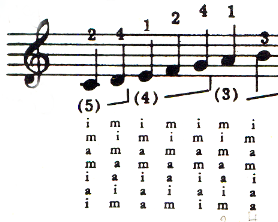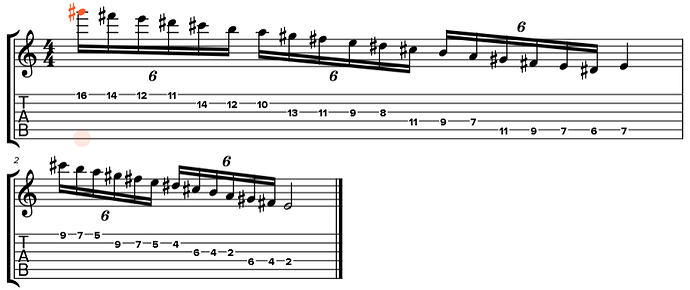Well @joebegly , it turns out I wasn’t able to stop thinking about this. I think I understand why the reverse cycle is faster/easier in the specific context of three finger picato on a single string.
The most likely issue is the lack of indepence in extension between the 2nd and 3rd fingers, and the difference in strength of extension.
In the reverse cycle, we need to flex the 3rd finger while keeping the second in relatively greater extension. The common extensor is Extensor Digitorum Communis (EDC), which is much stronger for the 2nd finger than the 3rd. Also, the 2nd finger is naturally longer, which means the relative difference in extension is small; the length of the 2nd finger assists in achieving this goal. The 3rd finger has an individual lumbrical and muscle slip of Flexor Digitorum Superficialis (FDS), so the flexion of 3rd finger can easily overcome the weakly engaged common extensor.
After the flexion of the 2nd finger, the 1st finger can act as a “buffer” between the flexion of the 2nd finger and the extension of the 3rd because it has it’s own individual extensor (Extensor Indicis).
However, in the forward cycle, we must hold the 3rd finger in extension while flexing with the 2nd finger. The common extensor EDC is much weaker at the 3rd finger than the 2nd (and can’t be engaged entirely independently), and the relatively shorter length of the 3rd finger compared to the 2nd exaggerates the required extension. The 2nd finger again has an individual lumbrical and muscle slip of FDS, which are stronger than those of the 3rd finger.
This imbalance results in extensor fatigue, especially if there is engagement of Flexor Digitorum Profundus. There is no “buffer” effect from the 1st finger, as the 1st finger is used at a different point of the cycle.
Much greater extensor activation is required during finger picking than in fretting (where we don’t so much need to extend as just cease flexion), so this problem is much more apparant for picking hand cycles than fretting hand cycles.



 I’d say to just ignore Segovia’s picking instructions for non classical purposes. Maybe even for classical purposes. It strikes me as dogma and adding to the never ending list of “stuff good musicians shalt do” that’s prevalent in that world. That’s sort of what I was getting at in general with my post - “do we really need to play a straight scale”???
I’d say to just ignore Segovia’s picking instructions for non classical purposes. Maybe even for classical purposes. It strikes me as dogma and adding to the never ending list of “stuff good musicians shalt do” that’s prevalent in that world. That’s sort of what I was getting at in general with my post - “do we really need to play a straight scale”???
 also he tends to lean his fretting hand back and i think it has to do with lessening the scratch sound from the unorthodox 4 notes per string shifting going on during string crossings.
also he tends to lean his fretting hand back and i think it has to do with lessening the scratch sound from the unorthodox 4 notes per string shifting going on during string crossings.
 My teacher had me do exercises where you would hold down all fingers on one string (either G or D string so it’s in the middle), but move just one finger all the way to the high e, then to low e. Then they would graduate you other more difficult moves, like keeping just the index/middle fingers fixed, but moving the ring finger to the high e while simultaneously moving the pinky to the low E, then inverting those fingers etc etc etc. It was challenging. My ability to do this of course steadily increased and honesty compels me to say it did help with pieces I played after the fact. Honesty also compels me to say I could have saved time by going straight to the pieces with the problem and focusing on those problems lol
My teacher had me do exercises where you would hold down all fingers on one string (either G or D string so it’s in the middle), but move just one finger all the way to the high e, then to low e. Then they would graduate you other more difficult moves, like keeping just the index/middle fingers fixed, but moving the ring finger to the high e while simultaneously moving the pinky to the low E, then inverting those fingers etc etc etc. It was challenging. My ability to do this of course steadily increased and honesty compels me to say it did help with pieces I played after the fact. Honesty also compels me to say I could have saved time by going straight to the pieces with the problem and focusing on those problems lol


